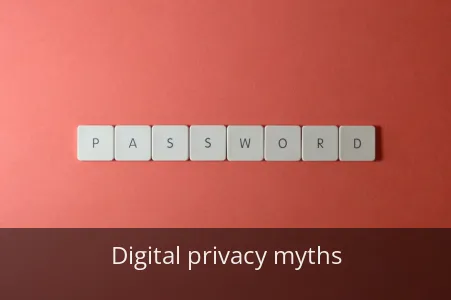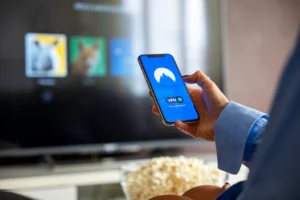
The Illusion of Safety: Are You Falling for These Privacy Traps?

You’ve probably tucked your phone away, thinking your digital life is secure because you’ve done everything right.
But what if the very myths you believe about your privacy are the cracks letting your data slip through?
We live in a world where our personal information is the new currency, and many of us are unknowingly giving it away for free.
This isn’t about complex cyberattacks or shadowy hackers in basements; it’s about the everyday apps and platforms we trust.
Today, we’re busting open three of the most common and dangerous privacy myths that are putting your data at risk right this second.
By the end of this article, you’ll see your digital habits in a whole new light and have simple, actionable steps to lock down your information for good.
Let’s move beyond the fear and into empowerment.
Myth #1: “I Have Nothing to Hide, So I Have Nothing to Fear”

This is the granddaddy of all privacy myths, and it’s a dangerously seductive one.
It suggests that privacy is only for those engaged in nefarious activities, but that’s like saying you don’t need curtains because you aren’t doing anything illegal in your living room.
Privacy isn’t about hiding; it’s about autonomy and choice.
It’s about deciding who gets to know what about you and how that information is used.
Think about the last app you downloaded.
Did you skim through the terms and conditions and just hit “agree”?
When you do that, you’re not just giving away your name and email.
You might be handing over your entire contact list, your location history, your browsing habits, and even your device’s unique ID.
This data is packaged, sold, and used to build a startlingly detailed profile of you—a profile that influences the ads you see, the prices you’re quoted online, and even the content you’re fed.
It’s not about having something to hide; it’s about having something to protect—your identity, your preferences, and your right to a fair digital experience.
Myth #2: “Incognito Mode Makes Me Anonymous Online”

Let’s be brutally honest: Incognito or Private Browsing mode is one of the most misunderstood features in tech.
It feels secretive, like a digital cloak of invisibility.
In reality, it’s more like a very flimsy raincoat in a hurricane.
Here’s what it actually does: it prevents your browser from saving your history, cookies, and form data on that specific device.
That’s it.
Now, here’s what it doesn’t do: hide your activity from your internet service provider, your school or employer, the websites you visit, or the government.
They can all still see exactly what you’re doing.
So, while it’s useful for keeping your holiday gift searches a surprise from your family sharing your computer, it does precisely nothing to protect your data from the outside world.
You’re still being tracked, profiled, and analyzed—you’re just not leaving a breadcrumb trail on your own machine.
Myth #3: “This App/Platform is Free, So It’s a Great Deal!”
If you’re not paying for the product, you are the product.
This old adage remains the fundamental truth of the modern internet.
Those “free” social media platforms, handy utility apps, and fun photo filters have a business model, and it revolves entirely around your data.
Your attention is the commodity being sold to advertisers.
Every like, share, scroll, and pause is a data point collected and analyzed.
These platforms design their algorithms to learn what keeps you engaged so they can serve you more of it, often creating echo chambers and impacting your mental well-being.
The “deal” is you get a service, and in exchange, they get an intimate, sellable portrait of your life.
It’s not necessarily evil, but it’s crucial to understand this transaction clearly, rather than believing you’re getting something for nothing.
Your Action Plan: Simple Steps to Take Back Control

Now that we’ve shattered these myths, what can you actually do about it?
Don’t worry, you don’t need a degree in computer science.
Start with your app permissions.
Go into your phone’s settings and review which apps have access to your location, microphone, and contacts.
Does a simple flashlight app really need to know where you are 24/7? Revoke any permission that isn’t absolutely essential for the app to function.
Next, ditch the weak passwords.
Using “password123” is like locking your door with a piece of tape.
Use a password manager to generate and store strong, unique passwords for every site—it’s a total game-changer.
Finally, make two-factor authentication (2FA) your new best friend.
This adds a second step to your login process, like a code sent to your phone, which stops hackers in their tracks even if they have your password.
Digital privacy isn’t a destination; it’s a habit.
It’s about making conscious choices instead of blindly accepting defaults.
You don’t have to disappear off the grid, but you do deserve to know who’s watching and why.
So, the next time you click “agree,” ask yourself: what’s the real cost of this “free” service, and am I willing to pay it?
Your data is worth protecting.
Start now.
The Simple Click That Secures Your Peace of Mind

Have you ever had that eerie feeling, the prickling sensation on the back of your neck, that someone might be watching you through your laptop’s unblinking eye?
I certainly have, and it was during a late-night work session that the paranoia finally clicked.
My screen glowed, but the tiny green light beside my webcam remained ominously dark, and yet… I couldn’t shake the feeling.
That’s when I discovered the profound empowerment of a simple, physical solution: a Webcam Privacy Cover.
It wasn’t about complex code or digital firewalls; it was about taking tangible, immediate control.
Sliding that tiny piece of plastic shut became more than a habit; it was a daily ritual of reclaiming my personal space.
The model I chose, the Ksooa Webcam Cover Slide (3-Pack), was stupidly simple to apply and offered instant, undeniable peace of mind.
Now, that faint anxiety is completely gone, replaced by the satisfying click of knowing I am the one in charge of the lens.
It serves as a constant, physical reminder that sometimes, the most powerful forms of protection are also the simplest.
In a world obsessed with digital complexity, isn’t it refreshing to find security in a simple slide?

Leave a Reply